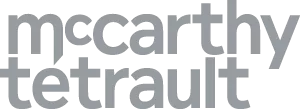- with readers working within the Construction & Engineering industries
- with Senior Company Executives, HR and Finance and Tax Executives
- in Canada
Only 72 hours ago, the Trump administration instituted its plan to apply a blanket tariff of 25% on all imports from Canada except for energy resources and certain minerals which face a 10% tariff. The situation remains very fluid, with significant announcements from the White House late last night The latest statements signal temporary relief in some areas, while exacerbating tensions in others, with considerable implications for cross-border businesses and regulatory compliance.
For background on how this situation has evolved, including the reinstatement of US tariffs and Canada's initial retaliatory measures, refer to our prior client alert, "Trade War Underway: Trump Tariffs Unpaused and Canada's Retaliatory Measures."
"Adjustments" to Trump Tariffs
On March 6, 2025, by way of a new executive order in what appears to be a significant concession, the Trump administration implemented a temporary suspension of 25% tariffs on goods from Canada and Mexico that claim and qualify for U.S.-Mexico-Canada Agreement ("USMCA" or "CUSMA") preference, and a reduction to a 10% tariff on Canadian potash that does not qualify under the USMCA. Energy products from Canada that do not qualify under the USMCA will be subject a 10% tariff.
This means that Canadian goods that have been certified as satisfying the rules of origin contemplated in the USMCA, and having the requisite CUSMA origin certificates or statements to prove compliance, will not be subject to the 25% blanket tariffs, or the 10% tariff in the case of energy products and potash, if the USMCA preference is claimed on importation into the United States.
Complying with USMCA Rules of Origin is Now Critical
The exemption, which the U.S. administration has said will remain in place until April 2, appears to apply to a broad range of products but does not cover all Canadian imports. In fact, recent reports indicate that only approximately 38% of Canadian goods shipped to the United States have been imported on a USMCA-compliant basis, leaving the remaining 62% potentially still subject to tariffs. However, these figures do not accurately reflect the ultimate share of goods from Canada that may be able to enter the US on such a basis. In the import/export business, it has been a common practice among many Canadian companies to refrain from claiming USMCA preference when on imports into the US that have a 0% or relatively law rate of customs duty. Many companies considered the complicated assessment of the USMCA rules of origin not worth the hassle in the absence of any significant cost savings on customs duties. While many may be CUSMA compliant, and therefore able to take advantage of this exception, it will challenging for them to quickly determine whether their goods are compliant with the rules of origin.
In the case of any natural resources (such as oil, gas, timber or minerals) and agricultural products that are extracted or grown and harvested within Canada, the United States and Mexico without any inputs from outside of the USMCA countries, certifying that the product originates can be fairly straightforward. For products that are manufactured or processed within one or more of the USMCA countries but include non-USMCA originating inputs or materials, satisfying the origin requirements can entail a far more complex exercise. In such cases, USMCA provides rules of origin on a product-by product basis which can include necessary "tariff shifts" for non-USMCA inputs and regional value content requirements, and in the case of automotive products, higher wage labour value content requirements. Considerations include:
- Whether there has been "substantial transformation" ― these are finished goods that are significantly transformed in the production process such that the final good is classified differently than its constituents goods;
- Indirect materials ― consideration of goods used in production, testing, or inspection, but not incorporated into the final product;
- Production location and regional value content ― these criteria contemplate certain required percentages of the value of the goods being sourced and/or produced from and in a specific signatory country. Note that the assessment requires review of the place the goods are produced, not necessarily their place of export; and
- Various rules around customs control and shipping/transshipment.
Certifying goods as originating when they do not can lead to significant liabilities. Exporters and manufacturers risk being liable for extra duty costs if their certification is incorrect, while importers may face retroactive duties and taxes. Agencies such as the Canada Border Services Agency and U.S. Customs and Border Protection verify origin claims through targeted and random auditing. To mitigate these risks, it is important to understand the certification process and include contract clauses that allocate such risks clearly.
What's Next?
Meanwhile, separate US tariffs on steel and aluminum are still expected to be implemented on March 12, 2025, at a 25% rate cumulative on any other applicable tariffs. Similarly, reciprocal tariffs targeting imports from countries applying domestic value-added taxes are set to commence on April 2, 2025.
Other product-specific tariffs including auto, semiconductor, pharmaceutical, copper, lumber and timber, may be also be subject to tariffs depending on the results of certain U.S. trade investigations, although the timing of imposition of these further tariffs is unclear.
Despite this temporary relief for some industries, automotive manufacturers received confirmation that tariffs imposed between Tuesday and Thursday of this week (March 4 to March 6, 2025) will not be refunded, leaving companies facing potential financial losses on shipments made before the exemption was introduced. Additionally, Trump has stated that no further delays will be granted for auto tariffs, reinforcing the April 2 deadline as a significant milestone in trade relations.
Several key industries have responded with urgency to these developments. Major restaurant chains met with White House officials to highlight the negative impact of tariffs on food imports, warning that the measures could cost the industry $12 billion. While the U.S. administration has acknowledged these concerns, there is no indication that exemptions for food and beverage imports are forthcoming.
Another significantly impacted industry is the trucking sector, where companies have begun halting shipments and considering layoffs in response to the shifting tariff landscape. Reports from the Canadian Trucking Alliance suggest that order cancellations and supply chain disruptions have already begun, with further instability expected in the coming weeks.
As we previously discussed in our client alert, this latest round of tariff delays introduces more uncertainty for businesses, particularly those with supply chains structured around the now-interrupted tariff exemptions.
Update on Canada's Retaliation
At the national level, Canada's Minister of Finance has announced that Canada will hold off implementing its planned second wave of retaliatory tariffs on US goods on $125 billion worth of American products until April 2, 2025, when the temporary suspension of US tariffs is set to expire. "Phase 1" tariffs remain in effect against a targeted selection of US goods worth $30 billion.
In response to the shifting U.S. trade policies, Ontario Premier Doug Ford has confirmed that the province will impose a 25% surcharge on electricity exports to New York, Michigan, and Minnesota, set to take effect Monday, March 11, 2025, just prior to the imposition of U.S. tariffs on steel and aluminum. This measure, which is expected to affect 1.5 million homes and businesses in these three states, was framed as a necessary but reluctant move by Ford, who expressed his preference for increased energy exports rather than punitive tariffs.
Implications for Cross-Border Business Activities
The ongoing uncertainty surrounding trade policies has created significant volatility for businesses engaged in cross-border commerce. Industries reliant on just-in-time supply chains, such as automotive and agriculture, face increased risks and compliance costs, as temporary, shifting exemptions offer limited long-term clarity.
The energy sector, particularly electricity exports from Ontario and Quebec to the U.S., faces regulatory challenges as grid operators in the Northeast scramble to determine how Trump's tariffs on Canadian power will be enforced. With Ontario's new 25% electricity surcharge set to take effect on Monday, this could increase costs for American businesses and consumers while prompting further policy responses from the Trump administration or U.S. state governments.
Financial markets have also reacted to these uncertainties. The Toronto Stock Exchange (TSX) fell by more than 1% on Thursday, reflecting investor concerns over the prolonged trade dispute. Similarly, U.S. markets suffered even steeper declines, with the S&P 500 falling 1.8%, amid ongoing uncertainty regarding future tariff policies and their economic impact.
As the April 2 deadline approaches, businesses must prepare for potential reinstatements of tariffs, continued negotiations, or additional retaliatory measures. The fluidity of the situation necessitates ongoing monitoring of policy shifts and proactive strategic planning to mitigate risks associated with evolving trade regulations.
And, as noted above, businesses will now be focused on determining which of their Canadian products, if any, satisfy the CUSMA rules of origin, in order for U.S. importers to take advantage of the temporary exemption.
These recent developments further reinforce the pattern of trade volatility we outlined in our prior alert, in which we emphasized the need for businesses to assess the potential for sudden changes in tariff enforcement and supply chain adjustments.
Conclusion
While some short-term relief has been granted in the form of temporary exemptions, the broader U.S.-Canada trade relationship remains unstable. As outlined in our previous client alert, this situation remains highly fluid, and businesses should remain vigilant in adapting to the evolving trade landscape.
We will continue to monitor these developments closely. Businesses should assess potential adjustments to supply chain operations, tariff compliance strategies, and market positioning. They should also be considering the application of any exemptions as well as relief mechanisms, including the process for obtaining remission on Canada's retaliatory surtaxes. We are particularly experienced in supporting business assess rules of origin against their products. This review is more important than ever, when a potential tariff exemption for those products is on the line.
To view the original article click here
The content of this article is intended to provide a general guide to the subject matter. Specialist advice should be sought about your specific circumstances.





